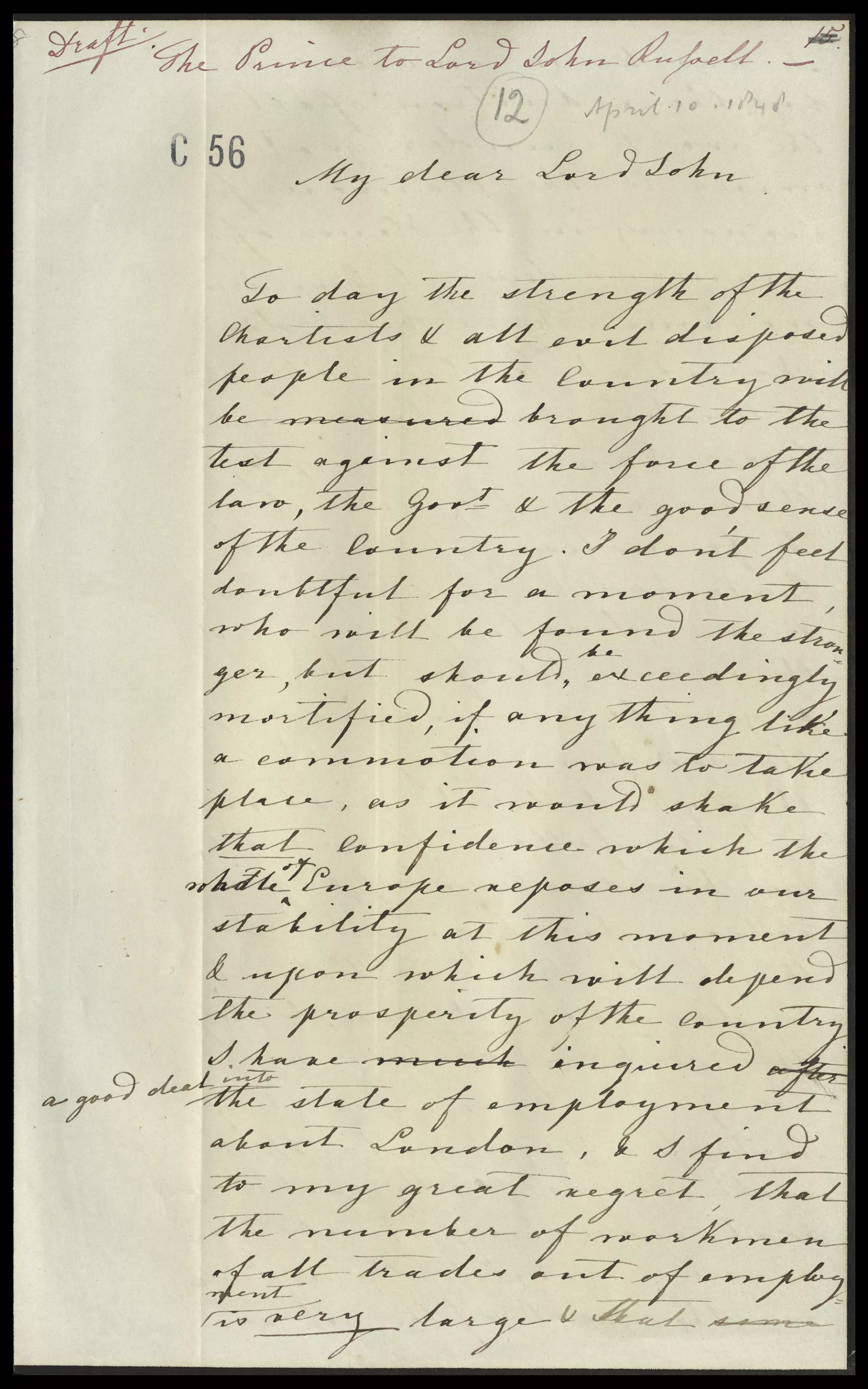
Prince Albert: his life and legacy
A major new digitisation project will explore Prince Albert's enduring legacy and influence
Draft letter to Lord John Russell
10 April 18481848 saw the first cyclical recession hit Britain. Previously, factors such as the weather and harvest had impacted heavily on the economy, but now the recession was driven by the cycle of investment and sales. The resulting unemployment struck British society hard. Working class political consciousness was now organised in support of the People's Charter, which called for democratic electoral reform, including the introduction of the secret ballot and the extension of voting rights to all men over 21 years of age. The charismatic leadership under Feargus O'Connor organised a huge petition with allegedly 6 million signatures and a 'monster demonstration' in order to deliver this to Parliament. Perhaps 150,000 Chartists gathered at Kennington Common on 10 April 1848, the date of Prince Albert's letter to Lord John Russell, the Prime Minister.
Prince Albert appears not particularly fearful of a popular uprising, and indeed, the government had taken extensive counter-measures, including the recruitment of 100,000 special constables to police the event. Nonetheless, it was a nervous moment, for revolutions had swept across Europe in the preceding month, removing the French King and threatening monarchies elsewhere.
Albert's draft to John Russell shows both his abhorrence of anything looking like revolution, yet also a profound concern for the welfare of the working classes. In particular he observes that the decision to economise on the building works at Parliament and Buckingham Palace and lay off the labourers seemed both foolish and unfair: 'Surely this is not the time for the Tax Payers to economise upon the Working Classes!'








